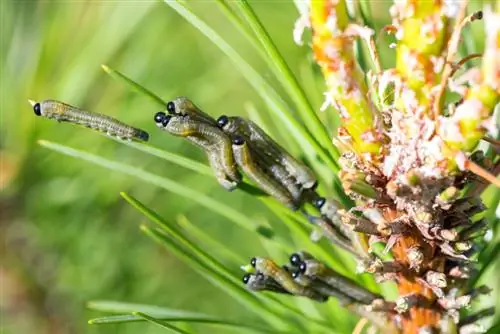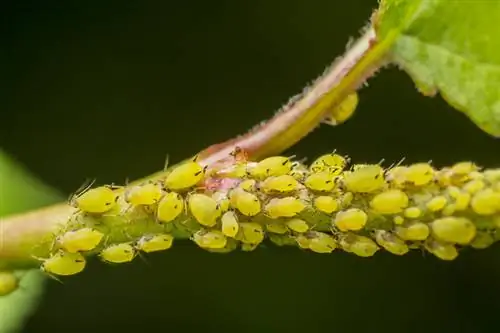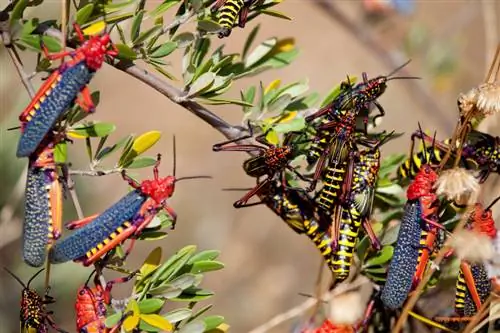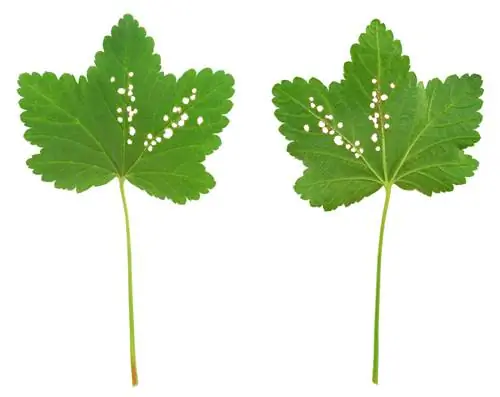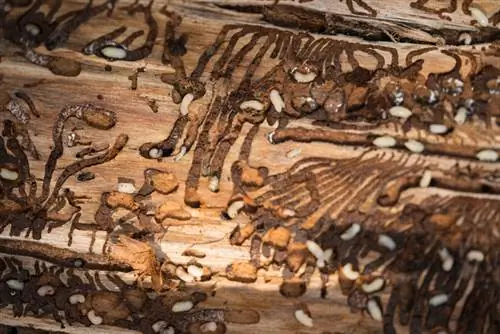- Author admin [email protected].
- Public 2024-01-05 20:48.
- Last modified 2025-01-23 11:21.
As a so-called pioneer tree, the pine is a true survivor. Thanks to its amazing adaptability, it grows in almost every place in the northern hemisphere. However, the conifer has not yet developed a protective mechanism against some pests. In the event of an infestation, it therefore depends on your help. As with any disease, early detection plays an important role in successful treatment. For this reason, the following article will show you the symptoms of the most common pests on pine trees and provide useful tips for resolving them.
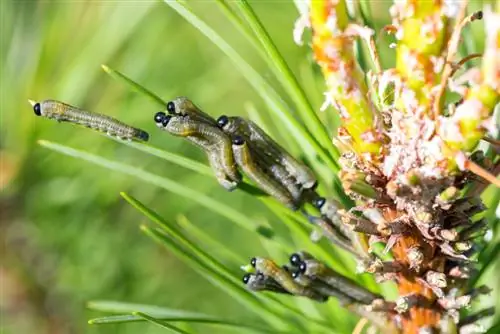
What pests attack pine trees and how should you proceed?
The most common pests on pine trees include bark beetles, butterfly larvae, wasp species and beetles. Nuns and pinewood nematodes are particularly threatening. If there is an infestation, you should notify the forestry office, pay attention to protected species and prefer natural treatment methods.
Common pests of pine trees
More and more pine pests are being introduced by humans due to globalization. Most species come from America, but are now threatening many European forests. These include numerous species of bark beetles, such as
- the pine branch buck
- or the pine top deep-eyed buck
In addition, butterflies lay like
- the pine moth
- the pine owl
- or the pine hawkmoth
their balls like to needle down on their jaws. Their caterpillars then feed on the wood, so that your pine tree slowly and gradually dies. Also wasp species like
- the pine bushhorn sawfly
- or the pine spider sawfly
or other beetles like
- the pine weevil
- or the pine jewel beetle
have made the pine tree their food source, much to the chagrin of many gardeners. However, the pests mentioned are considered comparatively harmless. The following parasites, however, are a serious threat:
Nuns
Nuns have a particularly high incidence after dry, hot summers. They then multiply explosively. Your jaw can often recover from an infestation. Unfortunately, it often doesn't stay that way, so if the branches are eaten again, the tree dies. The forestry industry is permitted to use special pesticides to combat this. However, these are not permitted for private use.
Pine wood nematode
Fortunately, this pest has so far remained largely away from Germany's forests. However, a spread here would have serious consequences and would destroy a large part of the coniferous forests.
How to proceed in the event of a pest infestation
Small creatures on your jaw are not always harmful. That's why you should never act hastily.
- notify the responsible forestry office
- find out about protected butterfly and insect species from the Nature Conservation Association
- get an expert opinion
- always prefer natural treatment methods to chemical poisons

